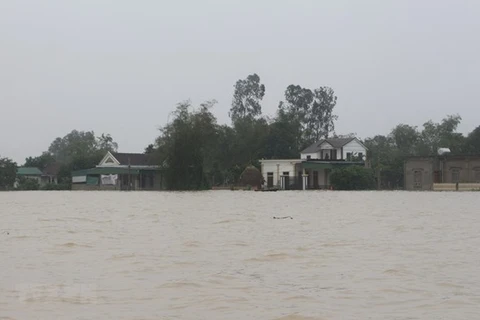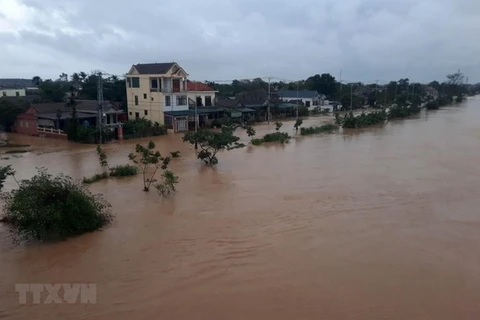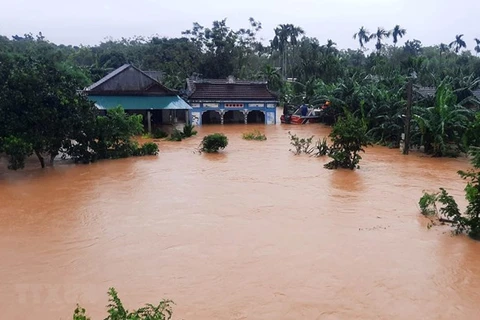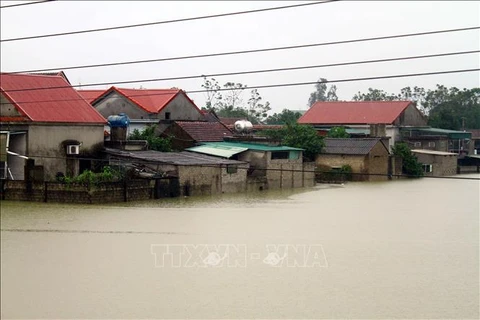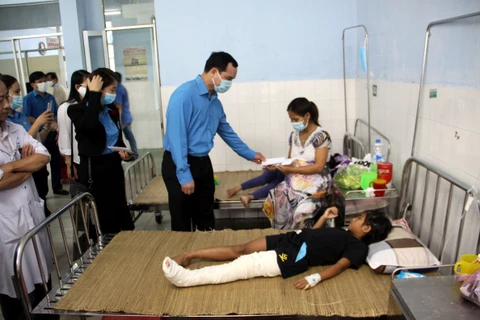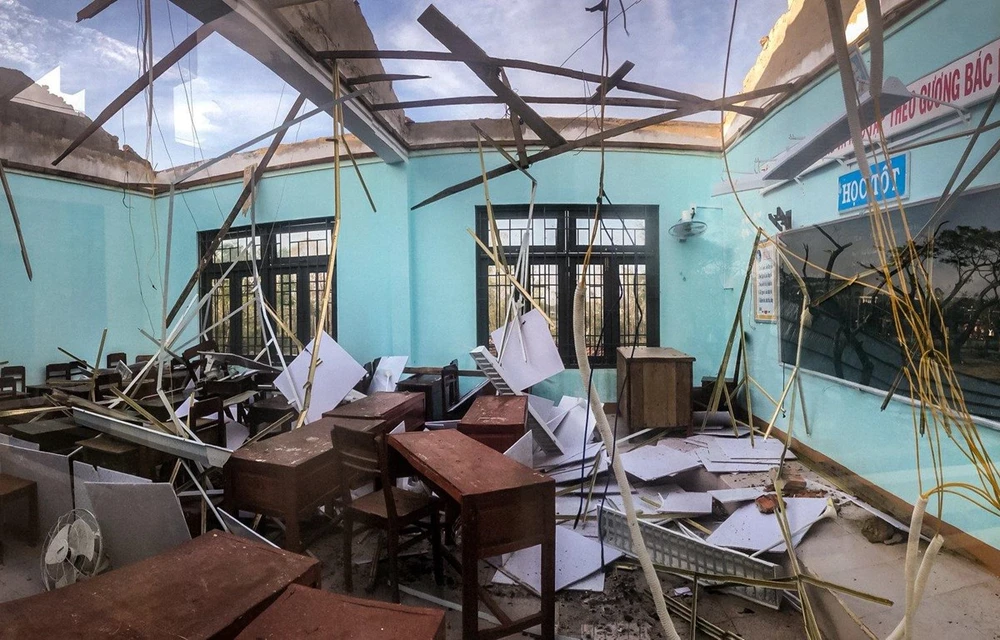
Hanoi (VNA) - The 2020 Vietnam Floods Response Plan was released recently with a view to seeking 40 million USD to provide assistance for 177,000 of the most vulnerable flood-affected people in central provinces of Vietnam.
It was built basing on the consultation among Government agencies, the UN Resident Coordinator for Vietnam, and the Save the Children Country Director, on behalf of the Disaster Management Group.
The plan covers six months and addresses both immediate humanitarian needs and some early recovery activities.
“The UN, humanitarian partners, and the Red Cross are focused on meeting the needs of the most vulnerable people in flood-affected area,” said UN Resident Coordinator Kamal Malhotra.
“They need immediate life-saving assistance now, as well as recovery support to help them rebuild their lives and livelihoods,” he noted.
The Government of Vietnam has called for international emergency relief and support.
A joint assessment was conducted by the Government, the UN, and non-governmental organisations in the five most affected provinces, including Quang Binh, Quang Tri, Thua Thien-Hue, Quang Nam, and Quang Ngai. The key findings identified the need to provide multi-sectoral assistance to 177,000 of the most vulnerable people in affected areas. An estimated 153,000 children are also at risk of discontinued learning due to damaged schools and in need for emergency education supplies including hygiene supplies and devices for online learning.
Humanitarian support is also required in evacuation sites that currently do not have enough supplies to meet basic needs including access to clean water and sanitation facilities, putting people at risk of sickness and disease.
While no local transmission of COVID-19 have been reported in Vietnam in over two months, efforts are underway to ensure the necessary prevention measures in place in all evacuation sites to mitigate the risk of communicable diseases, including COVID-19. Protection activities, especially for women and girls, are essential for those living in evacuation sites. The Government has also requested that all relief activities target the most vulnerable people including women, female-headed households, children, people with disabilities, older people, as well as poor and near-poor people.
 Almost all aspects, from housing, food, and schools to health centres, have suffered from heavy impact of storms and floods (Photo: UNICEF)
Almost all aspects, from housing, food, and schools to health centres, have suffered from heavy impact of storms and floods (Photo: UNICEF) “Many people were already under the economic stress created by the second wave of COVID-19 which hit central Vietnam. These floods have left people in a devastating situation,” said UN Resident Coordinator Malhotra.
“Once immediate life-saving needs are addressed, we must prioritise the humanitarian-development nexus to help the poorest and most vulnerable people recover, while supporting all communities in Vietnam to become more climate-resilient and resilient than ever before,” he noted.
An estimated 1.5 million people have been affected by torrential rains, widespread flooding, and landslides triggered by five consecutive storms that have hit central Vietnam in the past month. As of 28 October, more than 200 people had been killed or were reported missing, almost 390,000 houses had been flooded, and more than 300,000 families had been evacuated, according to the Vietnam Disaster Management Authority.
Many people in affected areas have lost almost all of their household possessions or have had their homes, food stocks, livestock and crops heavily damaged, with the most vulnerable people bearing the worst consequences. Typhoon Molave alone, which hit Vietnam on October 28, damaged 92,000 houses and killed at least 36 people. After sweeping through the Philippines, Typhoon Goni is expected to bring further rains to the Vietnam’s central provinces in the coming days./.
